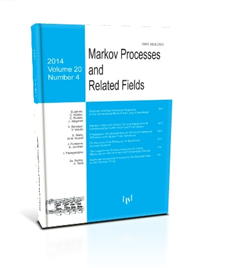Properties of Conjugate Channels with Applications to Additivity and Multiplicativity
C. King, K. Matsumoto, M. Nathanson, M.B. Ruskai
2007, v.13, Issue 2, 391-423
ABSTRACT
Quantum channels can be described via a unitary coupling of system and environment, followed by a trace over the environment state space. Taking the trace instead over the system state space produces a different mapping which we call the conjugate channel. We explore the properties of conjugate channels and describe several different methods of construction. In general, conjugate channels map $M_d \mapsto M_\d2$ with $d < \d2$, and different constructions may differ by conjugation with a partial isometry. We show that a channel and its conjugate have the same minimal output entropy and maximal output $p$-norm. It then follows that the additivity and multiplicativity conjectures for these measures of optimal output purity hold for a product of channels if and only if they also hold for the product of their conjugates. This allows us to reduce these conjectures to the special case of maps taking $M_d \mapsto M_{d^2}$ with a minimal representation of dimension at most $d$. We find explicit expressions for the conjugates for a number of well-known examples, including entanglement-breaking channels, unital qubit channels, the depolarizing channel, and a subclass of random unitary channels. For the entanglement-breaking channels, channels this yields a new class of channels for which additivity and multiplicativity of optimal output purity can be established. For random unitary channels using the generalized Pauli matrices, we obtain a new formulation of the multiplicativity conjecture. The conjugate of the completely noisy channel plays a special role and suggests a mechanism for using noise to transmit information.
Keywords: quantum channel,completely positive map,additivity
COMMENTS
Please log in or register to leave a comment

